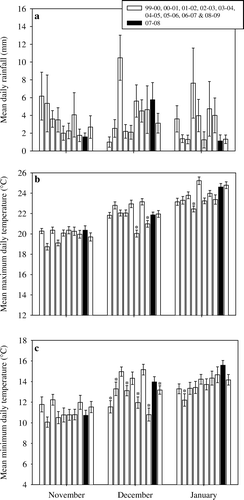Figures & data
Fig. 1 Locations of transects used to study Scolypopa australis densities and the prevalence and intensity of honeydew on tutu (Coriaria arborea) in January to February 2009 (closed triangles). The locations of the National Institute of Water and Atmospheric Research (NIWA) weather stations from which the weather data were obtained are also shown (open squares).
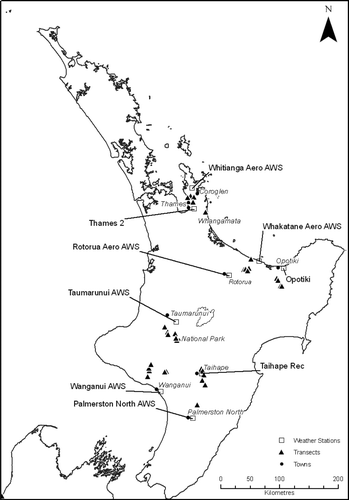
Fig. 2 Relationship between the density of S. australis found at each transect and elevation. Each data point represents an individual visit to each transect (n=40 transects). All transects that always had zero S. australis prevalence (n=8) were located at 375 m and above.
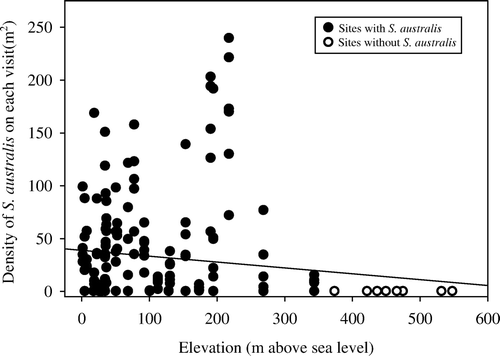
Table 1 Summary of analysis of variance of weather (rainfall, maximum temperature [T max] and minimum temperature [T min]) and honeydew percent leaf cover for the 32 transects where S. australis were present
Fig. 3 Relationships between the weather variables found to significantly affect honeydew leaf cover in ANOVA and honeydew leaf cover.
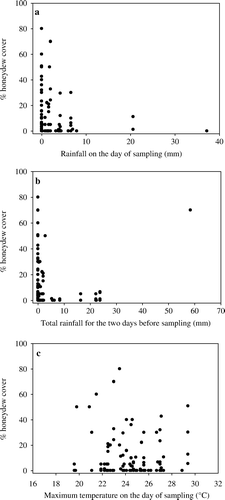
Table 2 Summary of analysis of variance of weather (rainfall, maximum temperature [T max] and minimum temperature [T min]) and honey bee presence for the 32 transects where S. australis were present
Fig. 4 The presence of honey bees (A. mellifera) at sites with passion vine hopper (S. australis) in relation to the two weather variables found to significantly affect this in ANOVA.
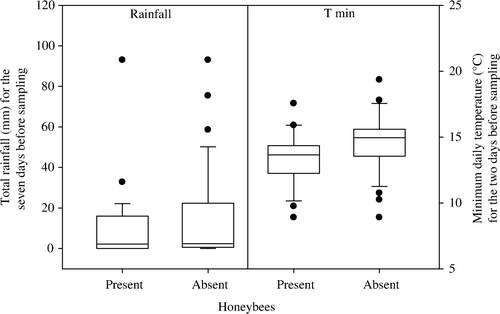
Fig. 5 Daily rainfall and maximum (T max) and minimum (T min) temperatures recorded in Whangamata township (37 216S, 175 877E) by a local resident from 1 November 2007 to 31 January 2008. Toxic honey was harvested in the Whangamata region on 20 January 2008 (indicated by open circle).
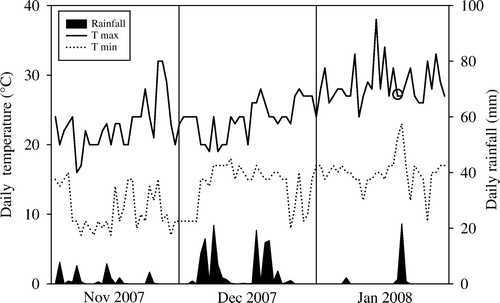
Fig. 6 Differences in mean rainfall and temperature conditions recorded by the Whitianga Aero AWS (36 834S, 175 677E) in November, December and January between 2007–08 (period that toxic honey was produced) and 1999–00 to 2008–09. Asterisks indicate significant differences (P<0.05) between the 2007–08 period and other years; error bars represent the standard error of the mean.
